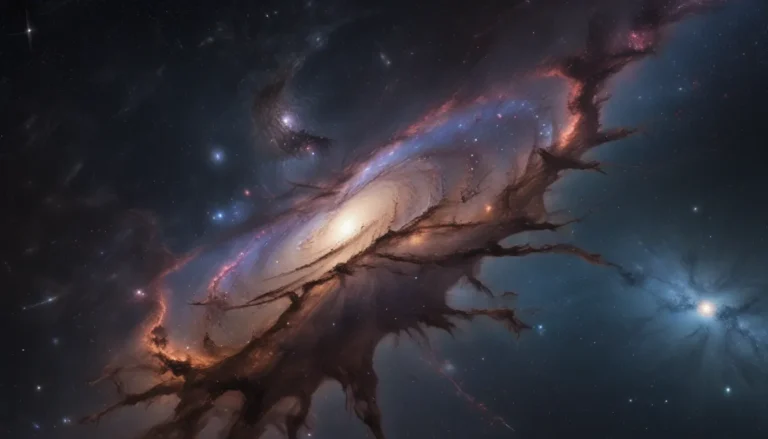The pictures we use in our articles might not show exactly what the words say. We choose these pictures to make you interested in reading more. The pictures work together with the words but don’t take their place. The words still tell you the important facts.
The Leo constellation, named after the Latin word for lion, stands as a majestic sentinel in the night sky, captivating observers with its vibrant stars and rich mythology. From ancient civilizations to modern stargazers, Leo has been an enduring source of fascination and inspiration for generations. In this article, we will embark on a cosmic journey to discover 20 amazing facts about the Leo constellation, shedding light on its celestial significance, prominent stars, and captivating history.
Exploring the Rich Tapestry of Leo Constellation
The Leo Constellation is not merely a cluster of stars; it is a gateway to the wonders of the universe, steeped in mythology and astronomical significance. Here are some fascinating facts that will deepen your appreciation for this celestial lion and its enduring impact on human culture and curiosity.
The Oldest of Them All: Leo Constellation’s Legacy
The Leo Constellation holds the distinction of being one of the oldest recognized constellations in the night sky. Documented by ancient Mesopotamians and Greeks, its prominence has endured throughout history, serving as a timeless beacon in the celestial realm.
Zodiac Royalty: Leo in Astrology
As one of the 12 zodiac constellations, Leo represents the lion in Greek mythology and is associated with individuals born between July 23 and August 22. People born under the sign of Leo are often characterized by traits such as strength and leadership, inspired by the regal nature of the celestial lion.
Bright Stars and Stellar Stories
Within the Leo Constellation, several bright stars shine brightly, adding to its celestial allure. Stars like Regulus, Algieba, and Denebola contribute to the constellation's distinctive shape and are visible to the naked eye, offering a mesmerizing sight in the night sky.
Meteoric Marvel: The Leonid Meteor Shower
Each year in November, the Earth encounters the debris left by comet Tempel-Tuttle, resulting in the spectacular Leonid meteor shower. Originating from the Leo Constellation, this cosmic display of shooting stars mesmerizes observers with its celestial splendor.
Deep-Sky Delights: Galaxies Galore
The Leo Constellation is rich in deep-sky objects, harboring numerous galaxies like Messier 65, Messier 66, and the Leo Triplet. These cosmic treasures captivate astronomers and stargazers alike, offering a glimpse into the vastness of the universe.
Mythology and Symbolism of Leo Constellation
The Leo Constellation's name traces its roots back to ancient mythology, where it represents the Nemean Lion slain by the hero Hercules as part of his labors. The constellation's resemblance to a lion adds to its mystique, making it one of the few constellations that closely mirrors its namesake.
Cultural Significance and Astrological Influence
Leo's influence extends beyond mythological tales, finding its place in various cultures throughout history. Revered as part of the Royal Family of constellations in Western astronomy, Leo is associated with traits like strength, courage, and leadership in astrology, shaping the perceptions of those born under its zodiac sign.
Celestial Navigation and Artistic Inspirations
Sailors and navigators have long relied on the stars of the Leo Constellation for celestial navigation, using its position in the night sky to determine direction and location. Additionally, artists, writers, and poets have drawn inspiration from Leo's symbolism, incorporating its imagery into their creative works, contributing to its enduring cultural impact.
A Constellation for All Seasons
The Leo Constellation graces the night sky with its celestial splendor, offering a captivating sight whether observed through the naked eye or a telescope. Particularly prominent during the spring months in the northern hemisphere, Leo continues to inspire awe and wonder, serving as a timeless reminder of humanity's enduring fascination with the cosmos.
Conclusion: Embracing the Majesty of Leo Constellation
In conclusion, the Leo constellation stands as a testament to the enduring allure of the universe, captivating the imagination with its rich history, cultural significance, and celestial marvels. Whether observed for its mythological ties, astrological influence, or artistic inspiration, Leo continues to inspire a sense of wonder at the vastness and beauty of the cosmos. As we gaze upon the celestial lion in the night sky, let us be reminded of the timeless fascination that binds us to the mysteries of the universe.
FAQs: Your Cosmic Queries Answered
-
What is the best time to view the Leo constellation?
The Leo constellation is most visible in the Northern Hemisphere during the spring months, particularly in March and April, offering optimal viewing opportunities for stargazers. -
How can I locate the Leo constellation in the night sky?
Look for the distinctive backward question mark pattern known as the "Sickle," formed by the bright stars representing the lion's head and mane. This recognizable shape will guide your eyes to the heart of the constellation for further exploration.
Connect with the Cosmos: Join Our Journey of Discovery
As we conclude our cosmic journey through the wonders of the Leo constellation, we invite you to explore the mysteries of the universe with us. Each fact shared here is a testament to the richness and diversity of celestial phenomena, waiting to be discovered and embraced. Trust in our commitment to quality and authenticity as we navigate the vast expanse of the cosmos together, fueled by a shared passion for unraveling the wonders of the night sky.






